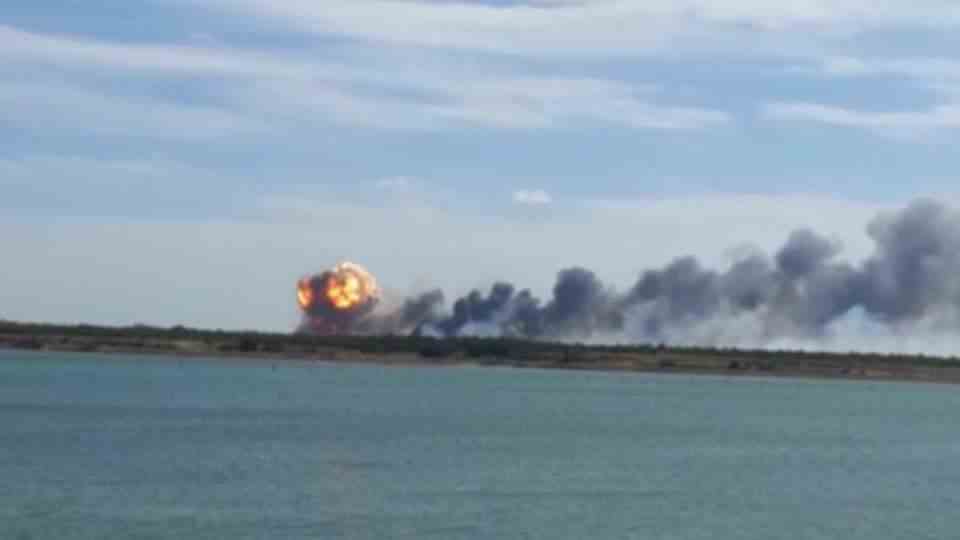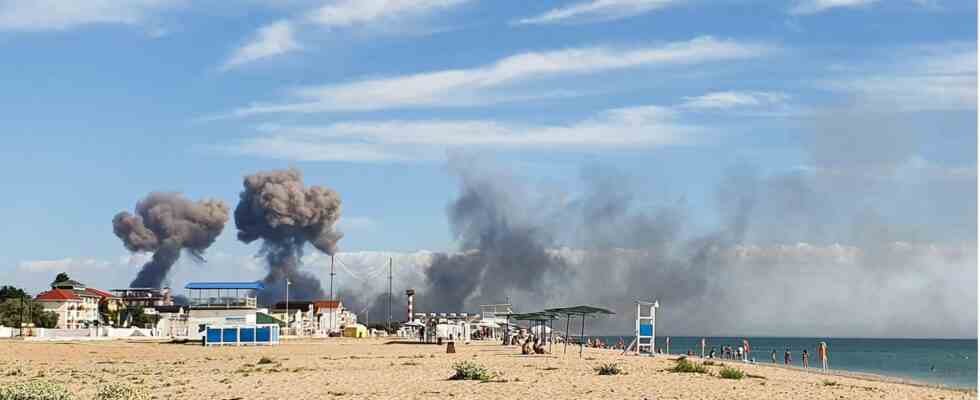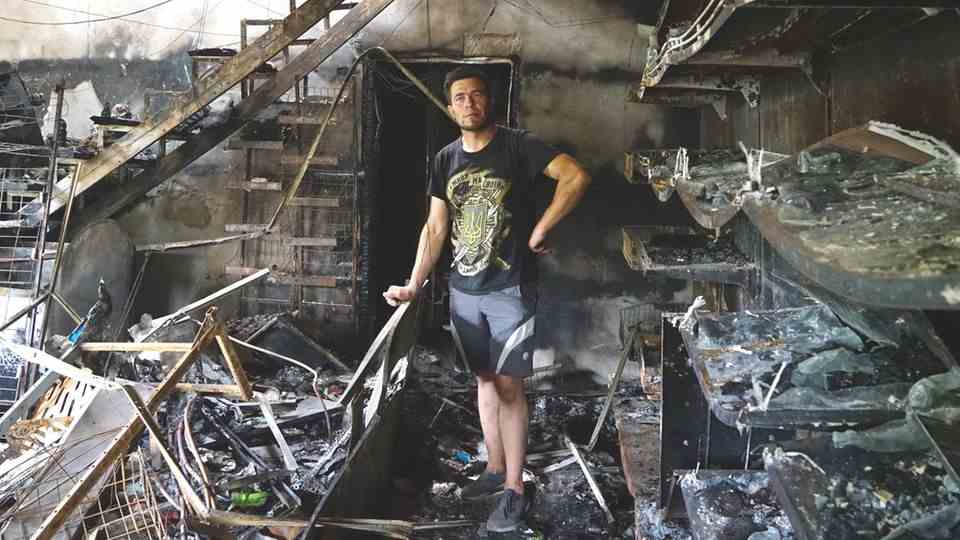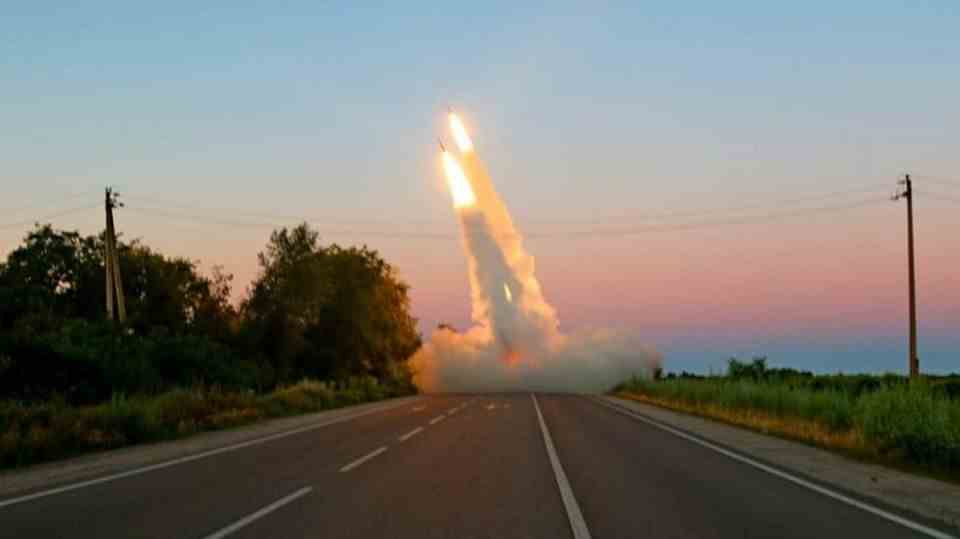Who is responsible for the heavy explosions in Crimea? The explanations for the incidents at the Russian air base in Saki range from lax fire protection and a partisan attack to a possible new weapon system. The fact is: Ukraine knows how to use the confusion.
After the massive explosions at the Russian air force base in Saki on the Crimean Peninsula, which has been annexed since 2014, the world has been puzzling over the causes. Videos showing explosion mushrooms and dark clouds of smoke are circulating on social networks. The pictures are said to have been taken near the village of Nowofyodorovka, not far from the seaside resort of Yevpatoria. But the pictures ultimately do not provide any information about what exactly happened. Attempt at a reconstruction including possible explanations.
What exactly happened?
On Tuesday afternoon, several explosions, some of them violent, occurred on the grounds of the Saki military airfield near Nowofyodorovka. Two particularly large explosion mushrooms can be seen on Twitter videos as well as various smaller clouds of smoke. There is talk of up to twelve detonations.
Now explosions are not uncommon in a war. However, the location is special: The air force base is located around 220 to 240 kilometers from the front line and is therefore actually beyond the range of all previously known Ukrainian weapon systems.
At Saki, about 70 kilometers north of Sevastopol, Russia had stationed Sukhoi Su-24 tactical bombers and Sukhoi Su-30 multirole fighter aircraft. Many attacks on targets in southern Ukraine were flown from the base. Numerous burnt-out cars can be seen in the Twitter videos, as well as a destroyed Su-24.
What are the Russians saying?
A first statement by the Russian military said that no one was injured in the explosions. The base had not been shelled or bombed. Rather, the cause is the fire in an ammunition depot. Crimea boss Sergei Aksyonov later corrected the victim information and spoke of one dead and nine injured, including two children. There was no talk of destroyed aircraft. A source in Russia’s defense ministry cited a violation of fire safety rules as the most likely cause of the blasts. “There is no indication, evidence or even fact that the munitions were intentionally detonated.”

What are the Ukrainians saying?
Striking: Officials in Ukraine were initially reluctant to classify the events. The Ukrainian Ministry of Defense said it could not say what caused it. Later, a tweet by Presidential Advisor Mykhailo Podoliak caused irritation, leaving a certain amount of room for interpretation. “This is just the beginning,” Podoljak tweeted. Crimea has a future as a travel paradise without Russian occupation. However, when Podoliak was later asked by the independent TV channel Dozhd whether Kyiv was responsible for the events, he replied: “Of course not! What do we have to do with it?”
However, the Ukrainian Air Force insisted on naming the possible Russian losses. At least ten aircraft were destroyed. “After the explosion that we saw, it is clear that the Air Force contingent was hit,” Ukrainian Air Force Staff spokesman Yuri Ihnat said on television on Wednesday.
Ukrainian President Volodymyr Selenksky used the events in Crimea to promise his compatriots in his evening video message that the annexed peninsula would be brought home: “The Black Sea region cannot be safe as long as Crimea is occupied,” he said. “This Russian war against Ukraine, against all of free Europe, started with Crimea and must end with Crimea, with its liberation.”
Far more interesting, however, is what a unnamed senior military officer reported to the New York Times: The cause of the detonations at the air force base was actually an attack by the Ukrainian army. A new weapon developed by Ukraine was used. In addition, partisans loyal to Ukraine also played a role in the attack.
Zelenskyy’s advisor Oleksiy Arestovych also spoke unofficially of an attack with a new Ukrainian weapon “while our partners are not yet sending us long-range missiles”. The Ukrainian defense industry is making progress. Arestovych also mentioned the possible use of partisans.
What speaks for the version of an attack – and what against it?
An assessment of what exactly happened on Saki is difficult even for military experts. At ZDF today, military expert Wolfgang Richter from the Science and Politics Foundation analyzes: “The videos show several explosions in quick succession. There are said to have been twelve detonations within one minute.” The explosion clouds were several hundred meters apart. “The fact that twelve containers or bunkers for ammunition go up almost simultaneously at intervals of seconds over a large distance speaks for an organized attack,” says Richter.
On the other hand, retired Bundeswehr general Eugen Rams says in the “Welt”: “I don’t see a shelling in it yet”. Rams points out that Ukraine has no known weapon system of this range. Rams also doesn’t believe in an act of sabotage in Crimea, after all the area has been under Russian control for eight years.
Wolfgang Richter also considers sabotage or a commando action by the Ukrainian armed forces in Crimea to be unlikely. Just like the use of combat aircraft or drones. A 12-blast attack of this magnitude would require a larger number of aircraft or drones. “That would be a major airstrike and rather unlikely. Even with air-to-surface missiles, the aircraft would have to fly about 100 kilometers from the target in Crimea. The Russian air defense would have noticed that,” Richter told ZDF today
Which weapon systems are suitable
The air base is between 220 and 240 kilometers from the front. In theory, the Himars-type multiple rocket launchers supplied by the US to Ukraine have ammunition of this range. However, the US has so far categorically ruled out any delivery of this type of ammunition in order to prevent Ukraine from firing on Russian territory from its positions. A delivery of longer range Himars missiles would be a whole new twist and escalation. It’s hard to imagine given NATO’s strategy of not getting actively involved in the conflict.
The focus of the military experts is therefore primarily ground-to-ground missiles. According to military expert Richter, Ukraine is working on a successor to its well-known Tochka system called Grom-2 with a range of up to 500 kilometers. “I don’t want to rule out that the Grom-2 is now in use,” Richter speculates on ZDF. He also brings the Neptun rocket system, which is actually aimed against ships, into play. “These missiles have the right range, are accurate enough, and fly low, so they’re hard to spot,” Richter said.
Who is right? Now what actually happened?
Ultimately, this cannot be completely concluded from the available information. The much-discussed fog of war, which is often densely intensified by both sides with contradictory information, is currently still ensuring that the picture of events remains vague. The military experts at the US Institute for the Study of War at least allow themselves to be carried away with the remarkable interpretation that the Russian leadership does not want to admit a Ukrainian attack for image reasons. Because then Moscow would have to admit that its air defenses had failed.
A similar game of cat-and-mouse over interpretive authority last occurred in April when the Moscow, the flagship of the Russian Black Sea Fleet, sank. Ukraine claimed the Moskva was sunk by a missile attack, while Russia said a fire broke out on board, which ultimately led to the sinking.




